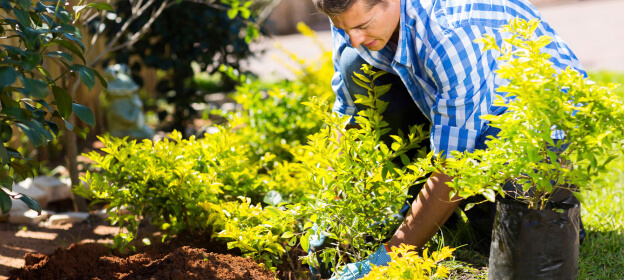Although summer is technically over, temperatures across Southern California remain high, making it feel more like summer than fall. As residents continue to battle the statewide drought, we wanted to follow up on our article covering the impact the drought has on homeowners associations.
Since the April 2015 water restrictions went into place, Californians have made major strides in conserving water, cutting back on usage by 31% this past July. However, SoCal residents are likely to notice the impact of the drought on landscaping and other outdoor spaces lately, since warm temperatures are still drawing many Southern Californians outside. As residents throughout the region implement lasting solutions, there are many HOA management resources that can help communities make a smooth transition to being more drought-conscious.
Community Turf Replacement
Outdoor watering constitutes about half of a household’s water usage, so replacing water-hungry grasses with native species, mulch, and other dry-weather landscaping can cut water consumption immediately. All Southern California counties offer a turf removal rebate as an incentive to help offset the cost of replacement. Funding for the project is renewed quarterly, so residents and homeowners association boards should check their local water utility website to learn more about registering for a rebate or signing up for the rebate waiting list. Residents can also contact their HOA management company to learn more about the necessary steps and documents required to apply.
Create a Turf Replacement Plan of Action
Residents count on their HOA to help establish guidelines for any turf replacement switch-over. Without a clear set of guidelines, residents might rip up their lawns with no clear plan of action, which can result in unsightly “dirtscapes” and half-finished projects. A homeowners association can help residents scheduling a neighborhood-wide turf removal day. HOAs can organize homeowners who want to split the costs of contracting a turf removal expert, then schedule the removal and replacement for specific dates.
Set Standards for Landscape Irrigation
For residents and communities who still have non-drought-resistant landscaping, clear watering guidelines will help maintain a community’s aesthetic standard. HOAs can draft community-wide guidelines to ensure that every resident is on the same page. When residents have a clear roadmap about when to water (and when to turn off the tap), communities can avoid irregularities between homes. HOAs can also help residents by reminding them of the penalties levied by local authorities for over-watering.
Establish a Palette of HOA-Approved Native Plants
In order to maintain the highest property value in a community, a neighborhood’s aesthetic is important. California state civil code §4735 prohibits HOAs from penalizing residents for reducing their outdoor water consumption or for replacing their landscaping with drought-resistant foliage. Boards can create HOA management resources like an established list of approved plants and landscaping materials to assist residents in making choices that conform to the standard set forth by the HOA. A community’s HOA management company can schedule a consultation with a reputable landscape architect to educate board members and residents about the plants that are most appropriate for a particular community.
Every community in Southern California has been impacted by the drought. Homeowners associations and HOA management companies should provide the information, organization and guidance that residents need in order to maintain beautiful, welcoming communities.
